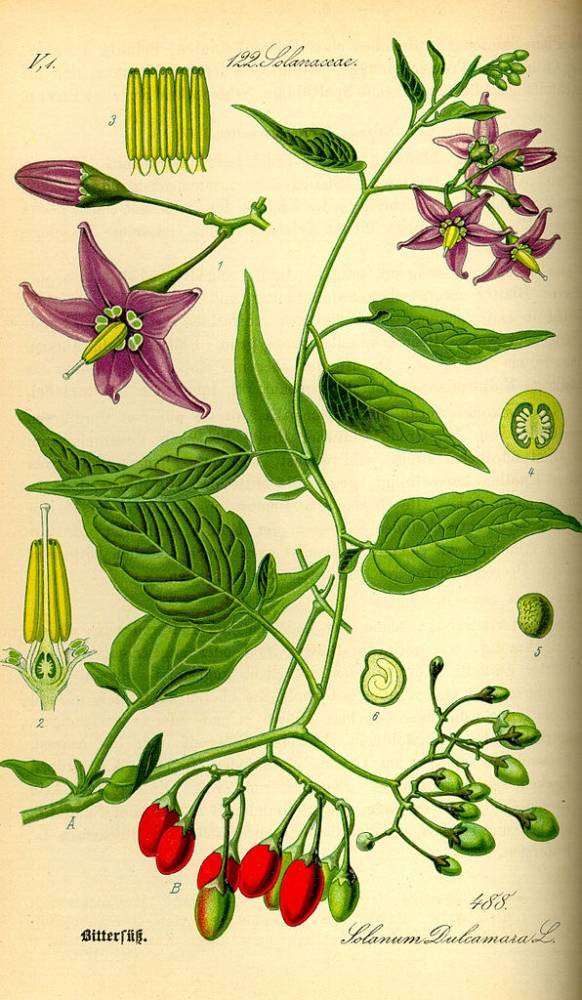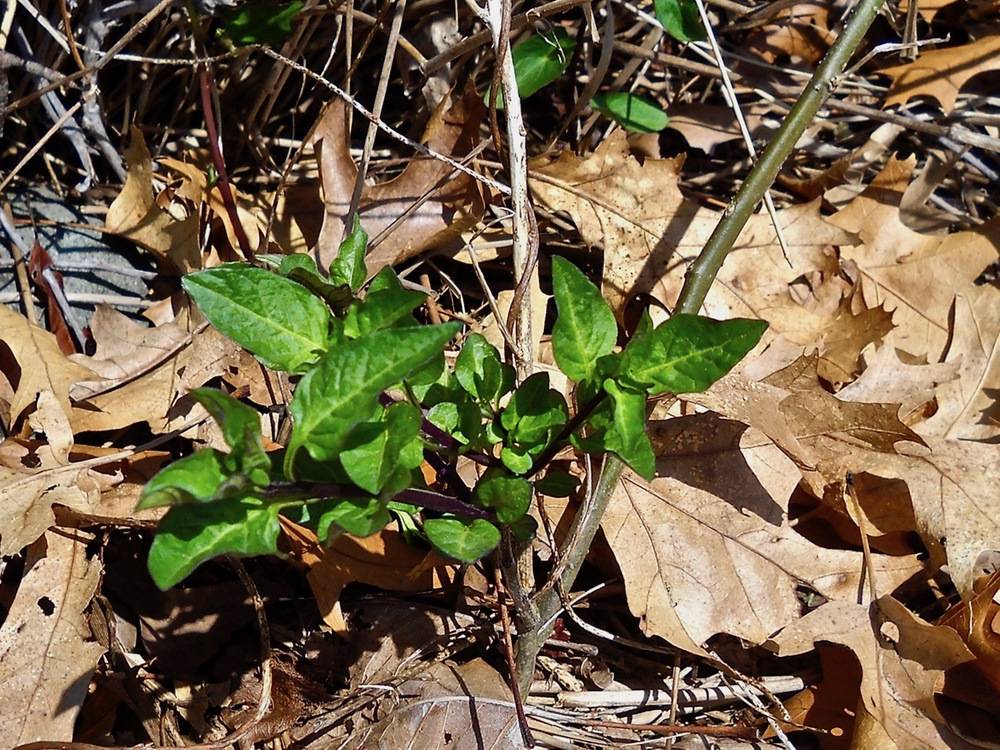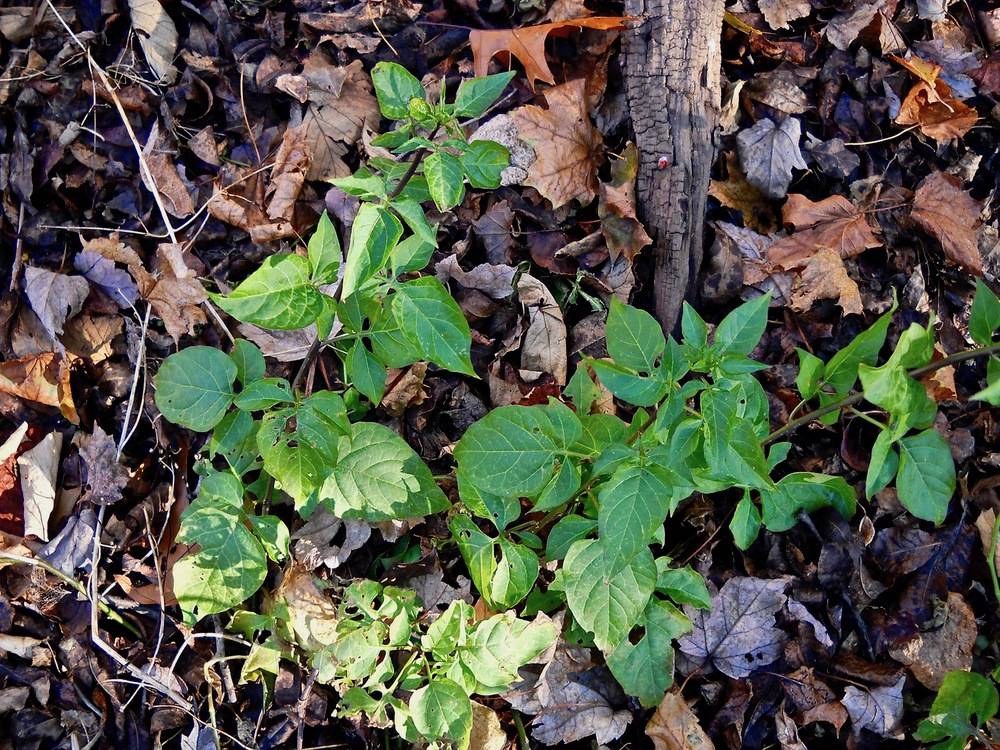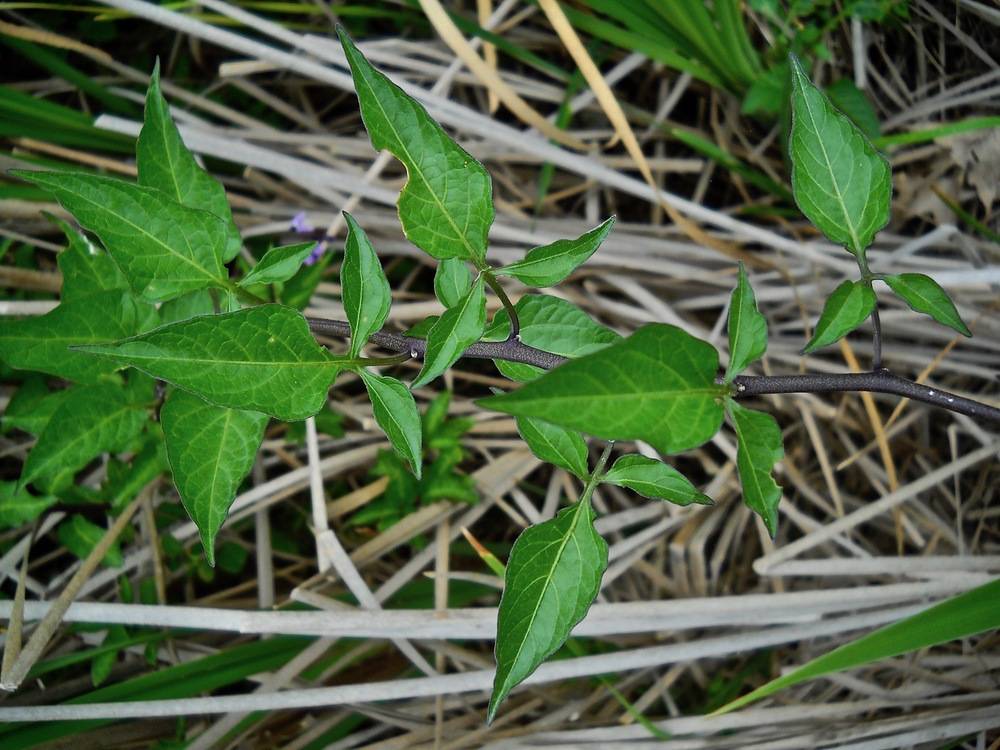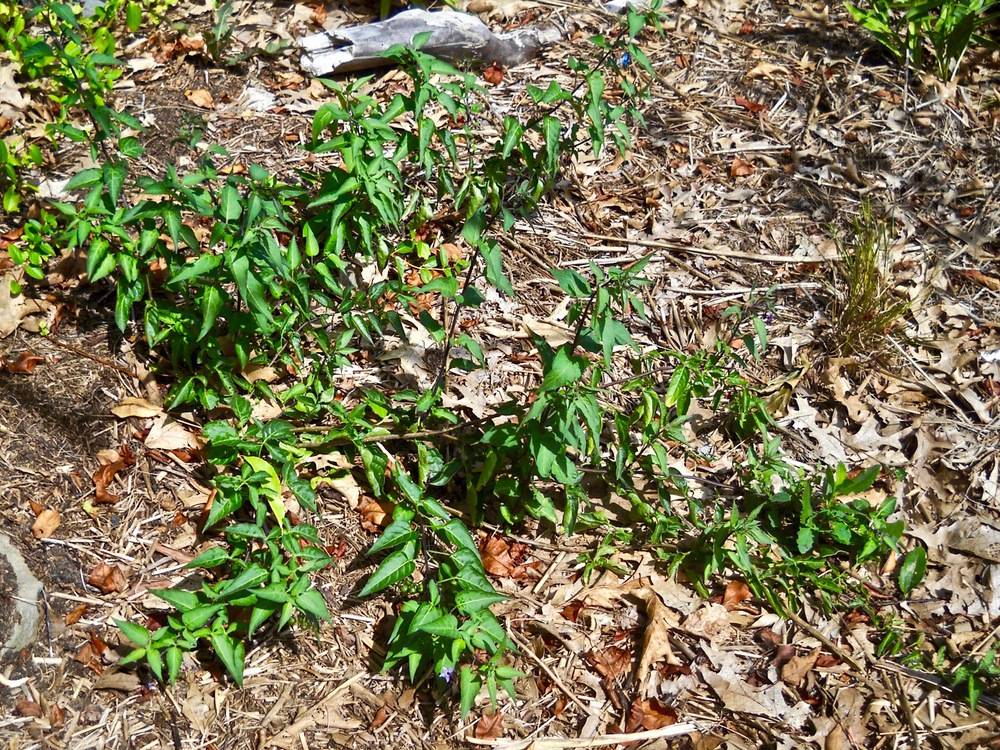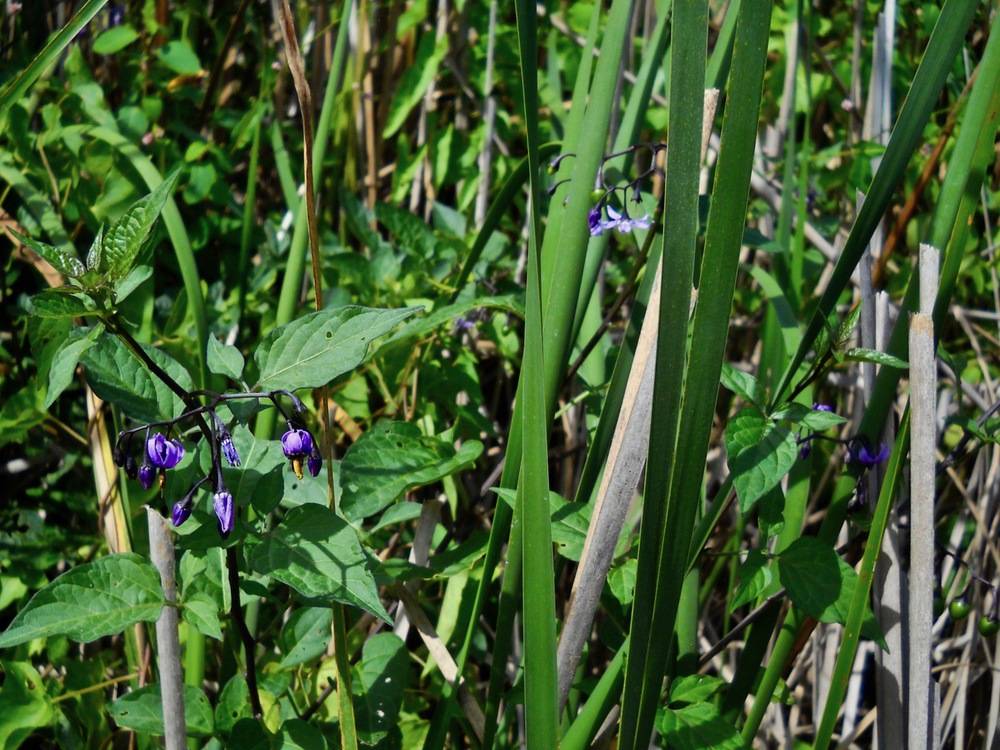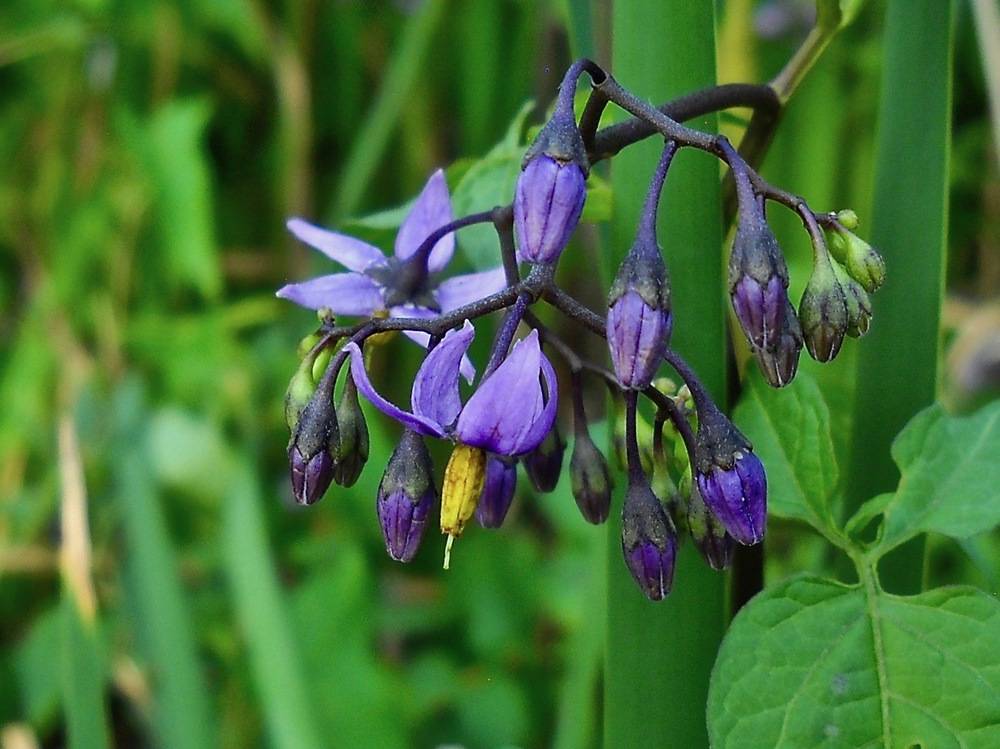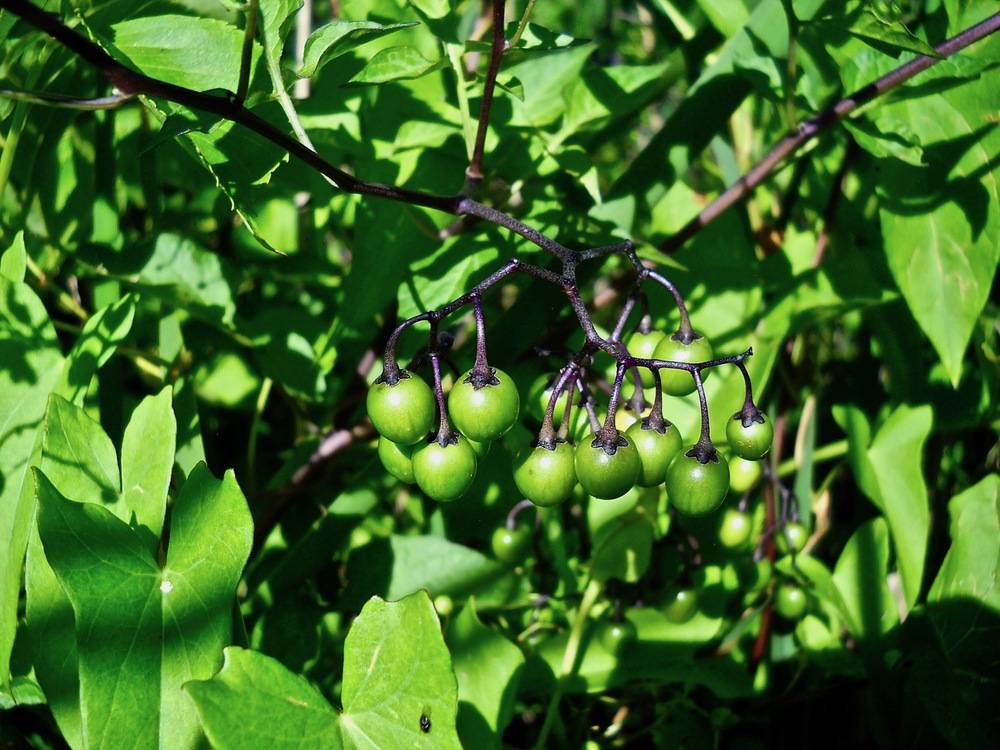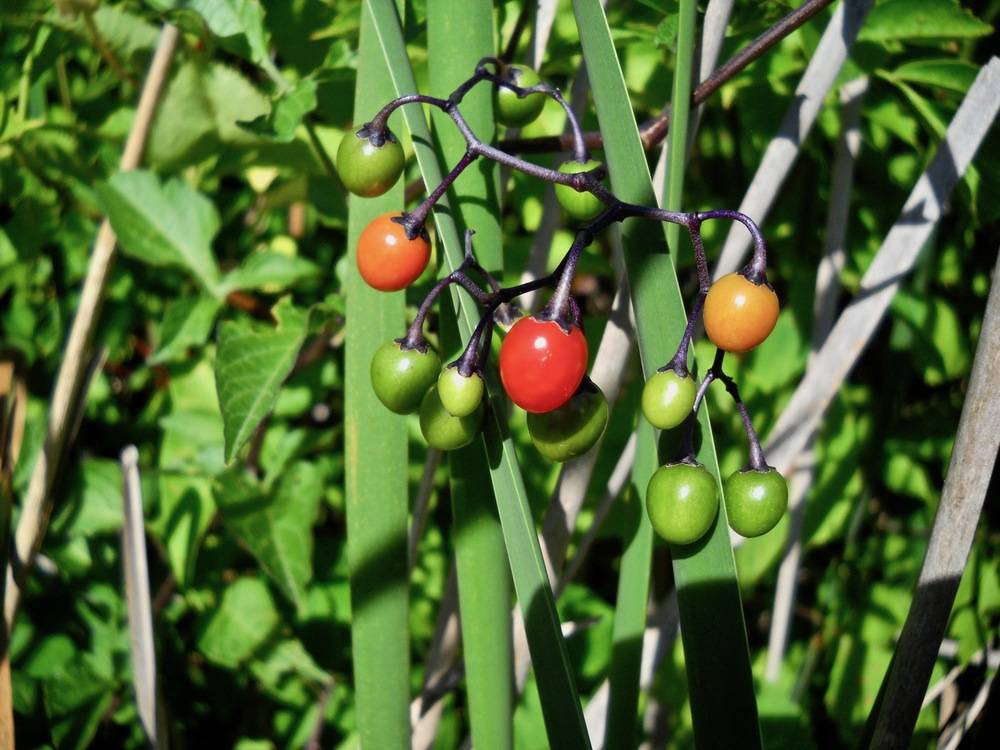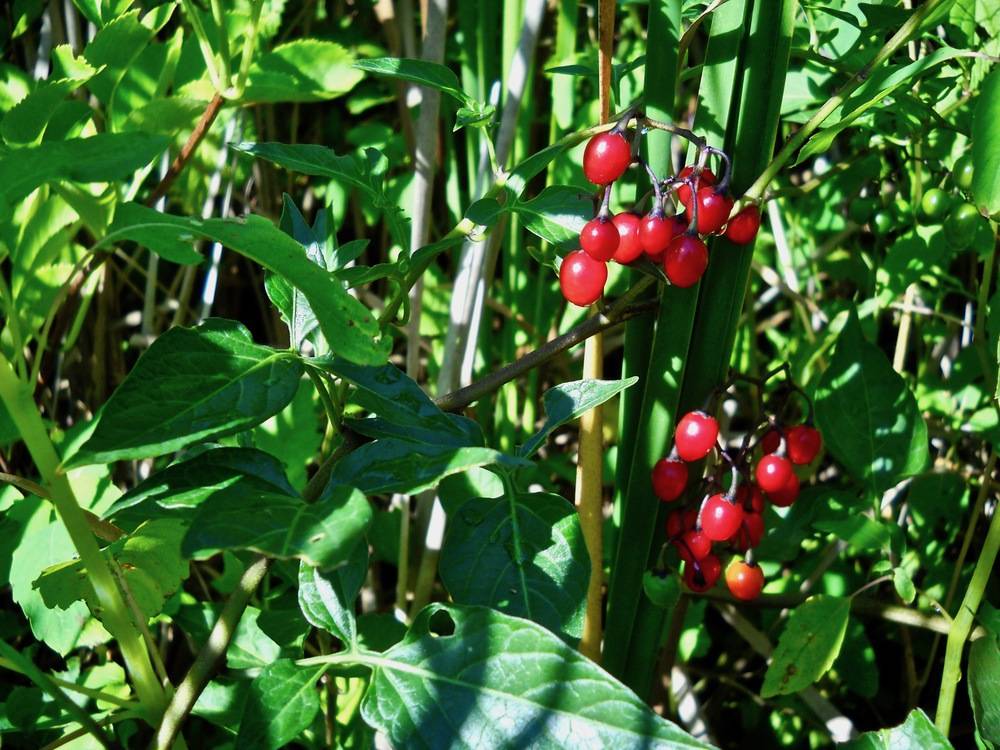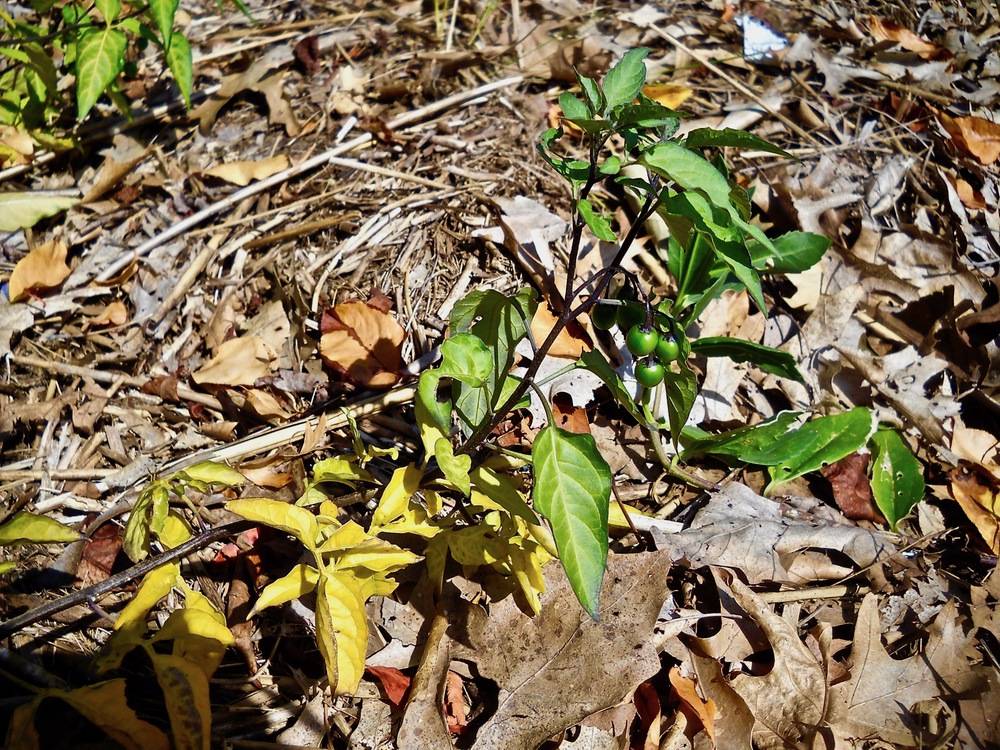climbing nightshade
The climbing nightshade is a perennial vine native to Europe, Asia and northern Africa that has been naturalized widely throughout the world. It is placed in the same genus as tomatoes, potatoes and peppers, and in the same family as petunias and tobacco. It grows in various habitats but prefers somewhat shady wetland environments with rich wet soils.
At Salter Grove, scattered individuals can be found climbing up the stems of taller plants along the Marsh Trail, as well as in muddy areas exposed along the Pond Trail. When no vertical support is available, the shoots will creep across the ground in different directions.
Flowering and fruiting occurs from spring through autumn. Visitors who grow vegetables will quickly see the resemblance in flower and fruit between the climbing nightshade and the tomato, a close relative. Birds feed readily on the ripe red fruits that look like tiny tomatoes and scatter the seeds far and wide.
The leaves, bark, and roots of the climbing nightshade have been used medicinally in Europe since ancient Greek times. An ointment was used to treat skin conditions such as eczema. Great care was required when consuming preparations internally. In small doses, a tincture was used as an alterative, diuretic or diaphoretic. In Russia, a few drops of the tincture in vodka was used to treat a weak heart. However, large quantities caused vomiting or respiratory paralysis. Although the ripe fruits contain less of the medicinally active ingredients, they have been reported to be mildly toxic to adult humans and in a few instances, fatally toxic to small children.
For more information:
https://gobotany.nativeplanttrust.org/species/solanum/dulcamara/
http://dendro.cnre.vt.edu/dendrology/syllabus/factsheet.cfm?ID=256
https://en.wikipedia.org/wiki/Solanum_dulcamara
https://www.friendsofthewildflowergarden.org/pages/plants/bittersweetnightshade.html
Coon, N. (1979). Using Plants for Healing. Rodale Press. p. 220.
Millspaugh, C.F. (1974). American Medicinal Plants. Dover Publications, Inc. pp. 482-485. (Original work published in 1892)
Richardson, J. (1981). Wild edible plants of New England: A Field Guide: Including Poisonous Plants Often Encountered. DeLorme Pub. Co. p. 56.

